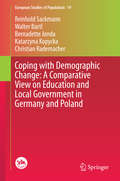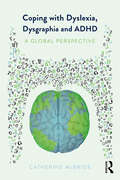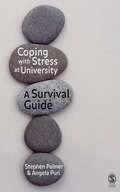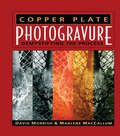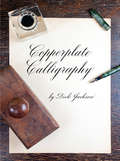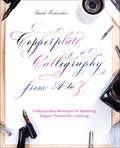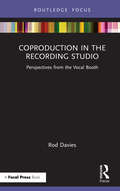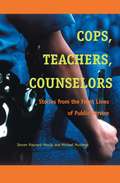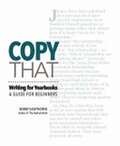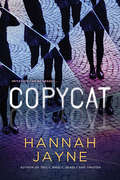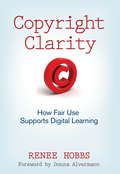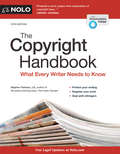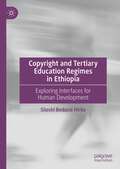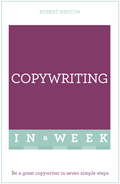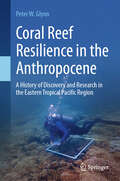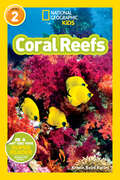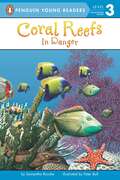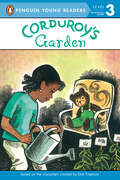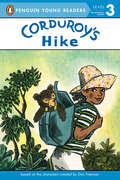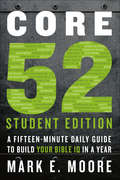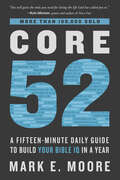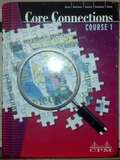- Table View
- List View
Coping with Demographic Change: A Comparative View On Education And Local Government In Germany And Poland (European Studies of Population #19)
by Reinhold Sackmann Walter Bartl Bernadette Jonda Katarzyna Kopycka Christian RademacherWith many OECD countries experiencing a decline in their populations, this book offers a theoretical model of coping with demographic change and examines different strategies that societies have used to come to terms with demographic change. In particular, it details the different ways that Germany and Poland have tried to cope with this challenge and reveals three conflicting strategies: expansion, reduction, and phasing out. Coverage includes: · How and why demographic change was used in Poland to expand the education system · The variance of linkage between demographic change and growth rates in different fields of education in a German Bundesland · Modes of reflexivity and personnel policy in German and Polish municipalities · Effects of demographic change and forms of coping on fiscal capacity and unemployment rates in German municipalities Coping with Demographic Change examines how and why societies cope with these detrimental effects. It conceptualizes the challenges a society faces as a result of demographic change and focuses on the processes by which actors, organizations and nation-states try to cope with this new situation.
Coping with Dyslexia, Dysgraphia and ADHD: A Global Perspective
by Catherine McBrideCoping with Dyslexia, Dysgraphia and ADHD: A Global Perspective uniquely incorporates dyslexia, dysgraphia, and ADHD into one volume, offering practical advice on how to manage each of these disorders. McBride combines a solid research base with interviews with specialists in learning disabilities, as well as parents, teachers, and students with personal knowledge of each difficulty from six continents. The innovative cross-cultural focus of the book is emphasized in the introduction, which is followed by one chapter each on the basics of each of these learning difficulties and another three chapters on their remediation. The book goes on to cover topics such as comorbidities across learning or other difficulties, learning of multiple languages, facilitating self-esteem, and enhancing reading comprehension and writing composition in the face of dyslexia, dysgraphia, and ADHD. Appendices with short, practical tips on learning, multi-media resources, and ways to test and train cognitive-linguistic skills are included as an additional resource. Coping with Dyslexia, Dysgraphia and ADHD: A Global Perspective is intended for practitioners, teachers, parents, and those with any or all of these learning difficulties. University or postgraduate students who wish to understand more about dyslexia, dysgraphia, and/or ADHD will also benefit from the clear analysis. With this book, the reader will not only come to understand the fundamental nature of these learning difficulties, but will also get to know the people whose lives are so deeply affected by them.
Coping with Special Needs: A Guide for New Teachers (Routledge Library Editions: Special Educational Needs #49)
by Geof SewellFirst published in 1986. Following the Warnock report, schools attempted to integrate the teaching of children with special needs into ordinary classrooms. Many teachers had no experience of teaching children with special needs and the new developments were likely to pose a substantial challenge. This book provides a guidance for inexperienced, especially new, teachers in how to teach children with special needs in ordinary classrooms. An important feature of the book is realism – the book grows out of the author’s own experiences and research. The author describes what really happens and bases his suggestions on practices which are likely to bring results.
Coping with Stress at University: A Survival Guide
by Stephen Palmer Angela PuriCoping with Stress at University comprehensively covers the main problems and stresses that a student may experience during their university career. Looking at university life from a variety of angles, this book equips the student to be able to deal with stressful situations ranging from exam pressure to relationship problems, from homesickness to managing finances. Although the problems do not change, the way a student faces them can and the more effective the approach, the less stress the student will feel when tackling their concerns. Quotes and case studies from previous students illustrate how problems have been dealt with in the past, and a number of coping techniques and exercises are provided to help prepare students for the transition into and through university life. Coping with Stress at University is an invaluable introduction to university life for any potential or current student, and it also acts as a helpful resource for parents and friends wishing to gain a greater understanding of the issues faced at university.
Copper Plate Photogravure: Demystifying the Process (Alternative Process Photography Ser.)
by David Morrish Marlene MacCallumCopper Plate Photogravure describes in comprehensive detail the technique of traditional copper plate photogravure as would be practiced by visual artists using normally available facilities and materials. Attention is paid to step-by-step guidance through the many stages of the process. A detailed manual of technique, Copper Plate Photogravure also offers the history of the medium and reference to past alternative methods of practice.Copper Plate Photogravure: Demystifying the Process is part of the current revitalization of one of the most satisfyingly beautiful image-making processes. The range of ink color and paper quality possibilities is endless. The potential for handwork and alteration of the copper plate provides yet another realm of expressive variation. The subject matter and the treatment are as variable and broad as photography itself. This book's purpose is to demystify and clarify what is a complex but altogether "do-able" photomechanical process using currently available materials. With Copper Plate Photogravure, you will learn how to:· produce a full-scale film positive from a photographic negative· sensitize the gravure tissue to prepare it for exposure to the positive · prepare the plate and develop the gelatin resist prior to etching· prepare the various strengths of etching solutions and etch the plate to achieve a full tonal scale· rework the plate using printmaking tools to correct flaws or to adjust the image for aesthetic reasons· use the appropriate printing inks, ink additives, quality papers, and printshop equipment to produce a high quality printA historical survey and appendices of detailed technical information, charts, and tables are included, as well as a list of suppliers and sources for the materials required, some of which are highly specialized. A comprehensive glossary introduces the non-photographer or non-printmaker to many of the terms particular to those fields and associated with this process.
Copperplate Calligraphy
by Dick JacksonNo need for copper or plates to achieve the distinctive calligraphic script of eighteenth-century Europe - just a pen, ink, and this comprehensive workbook will do. Master calligrapher Dick Jackson explains the basic strokes for almost all letters of the copperplate alphabet. Simple instructions and examples introduce the swirls, flourishes, strikings, and thick and thin strokes that make copperplate calligraphy a source of pleasure for the practitioner and a delight to the reader.A historical introduction traces the growth of copperplate from its roots in the French ronde of the seventeenth century, to its adaptation by English clerks into their copybooks, and the development of the style known as round hand. In addition, guide sheets and instructions for individual letters and numbers offer aspiring calligraphers a practical approach to this enduring art form.
Copperplate Calligraphy from A to Z: A Step-by-Step Workbook for Mastering Elegant, Pointed-Pen Lettering (Hand-lettering And Calligraphy Practice Ser.)
by Sarah RichardsonLearn to draw the popular classic script with this easy-to-use, full-color, and very modern guide.Pointed pen calligraphy doesn’t have to be intimidating! This photo-packed guide breaks down every skill, step, and stroke into easy-to-learn techniques. It shows you how to build a solid foundation in drawing beautiful letters as well as ways to add flourishes and embellishments to your personal projects. Nothing is overlooked, including:• Step-by-Step Instructions• Color Photos• Practice Pages• Expert Tips and Tricks• DIY Projects• Inspiration and Ideas
Coproduction in the Recording Studio: Perspectives from the Vocal Booth
by Rod DaviesCoproduction in the Recording Studio: Perspectives from the Vocal Booth details how recording studio environments affect performance in the vocal booth. Drawing on interviews with professional session singers, this book considers sociocultural and sociotechnical theory, the modern home studio space, as well as isolation and self-recording in light of the COVID-19 pandemic. This is cutting-edge reading for advanced undergraduates, scholars and professionals working in the disciplines of recording studio production, vocal performance, audio engineering and music technology.
Cops, Teachers, Counselors
by Michael Musheno Steven Maynard-MoodyWhether on a patrol beat, in social service offices, or in public school classrooms, street-level workers continually confront rules in relation to their own beliefs about the people they encounter. Cops, Teachers, Counselors is the first major study of street-level bureaucracy to rely on storytelling. Steven Maynard-Moody and Michael Musheno collect the stories told by these workers in order to analyze the ways that they ascribe identities to the people they encounter and use these identities to account for their own decisions and actions. The authors show us how the world of street-level work is defined by the competing tensions of law abidance and cultural abidance in a unique study that finally allows cops, teachers, and counselors to voice their own views of their work.
Copy That: Writing for Yearbooks
by Bobby Hawthorne Lori OglesbeeCOPY THAT: WRITING FOR YEARBOOKS: A BEGINNER'S HANDBOOK
Copycat
by Hannah JayneEveryone is dying to read the latest book in the popular Gap Lake mystery series, and Addison is no exception. As the novels biggest fan, she's thrilled when the infamously reclusive author, R.J. Rosen, contacts her, giving her inside information others would kill for. <P><P> Addison's always dreamed of what it would be like if the books were real...But then she finds the most popular girl in school dead. Murdered. And realizes that life imitating fiction is more dangerous that she could have imagined. As other terrifying events from the books start happening around her, Addison has to figure out how to write her own ending—and survive the story.
Copyright Clarity: How Fair Use Supports Digital Learning
by Renee HobbsThis jargon-free guide clarifies principles for applying copyright law to 21st-century education, discusses what is permissible in the classroom, and explores the fair use of digital materials.
Copyright Handbook, The: What Every Writer Needs to Know
by Stephen FishmanWhat copyright law protects....and doesn't No writers like to see their hard work or creativity copied by others - or to be accused of copying. Fortunately, The Copyright Handbook provides everything you need to protect yourself! Find information and forms to help you: register your work maximize copyright protection transfer ownership of copyright avoid infringement deal with infringers understand the "fair use" rule get permission to use copyrighted work profit from your copyright This edition is updated to provide the latest copyright regulations, forms and rules for filing a copyright application.
Copyright and Tertiary Education Regimes in Ethiopia: Exploring Interfaces for Human Development
by Sileshi Bedasie HirkoThis book explores the interlinkages between copyright and tertiary education regimes, and their complementary roles for sustainable human development. Emphasizing issues that are not addressed in-depth in the existing works, this book employs a new theoretical perspective in order to inform the exploration of the interlinkages through the lens of human development. To this effect, the book adopts the capabilities approach (CA) as an inclusive development framework that is suitable for examining the interfaces among copyright, tertiary education, and human development in Ethiopia.
Copywriting In A Week: Be A Great Copywriter In Seven Simple Steps
by Robert Ashton Rob AshtonGreat copywriting just got easierIt's strange to think that there was a time when only the privileged few could read or write. The rest of us relied on the spoken word. Storytelling was used to pass knowledge on from one generation to the next. Now, most of us are literate and use the written word to gather information and inform our decision making. Increasingly we do this online, with social media and messaging enabling rapid, spontaneous global communication. But rather than freeing us from the need for clear, effective written communication, it actually makes good communication even more important. The less we communicate face to face, the greater the opportunity for misunderstandings. Of course, all writing communicates your message to people you cannot see and may never meet. It means you can influence more widely; it also means you must take care not to make assumptions aboutyour reader, especially those who see your public postings. Successful copywriting is constructed from carefully selected words, each with a clear purpose. It is written to prompt feelings, thoughts or actions. It is clear, concise and at times comforting. It is also comprehensible, even to those not yet confident users of your language. Reading this book, and following the techniques it introduces, will make you a more effective writer. Expertise in grammar is not needed as all the necessary jargon is simply defined and, anyway, some forms of business writing deliberately ignorerules. This book is for people who want to write for results. Each of the seven chapters in Copywriting In A Week covers a different aspect:- Sunday: Focusing your message- Monday: Using layout, pictures and colour to make words memorable- Tuesday: Writing effective letters- Wednesday: Making advertising work for you- Thursday: Communicating clearly with the media- Friday: Preparing promotional print- Saturday: Composing proposals and presentation visuals
Copywriting In A Week: Be A Great Copywriter In Seven Simple Steps
by Robert AshtonThe ability to write great copy is crucial to anyone who wants to advance their career.Written by Robert Ashton, a leading expert on copywriting as both a coach and a practitioner, this book quickly teaches you the insider secrets you need to know to in order to write brilliant copy.The highly motivational 'in a week' structure of the book provides seven straightforward chapters explaining the key points, and at the end there are optional questions to ensure you have taken it all in. There are also cartoons and diagrams throughout, to help make this book a more enjoyable and effective learning experience.So what are you waiting for? Let this book put you on the fast track to success!
Coral Reef Resilience in the Anthropocene: A History of Discovery and Research in the Eastern Tropical Pacific Region
by Peter W. GlynnThis book chronicles six decades of exploration and ecological studies of Western American coral reefs, a vibrant and diverse ecosystem in a marginal tropical Pacific region that has long been overlooked. It begins with the discovery of pristine coral reefs in Panama in the 1960s, follows the impact of stressful El Niño warming events that caused widespread coral bleaching and mortality in the 1980s-1990s, documents coral recovery in the late 1990s and early 2000s, and addresses the recent resurgence (2023-24) of extreme El Niño events leading to renewed coral mortality and setbacks in reef recovery. The book delves into the challenges posed by the physical environment, including recurring ENSO activity and increasing ocean acidification, and examines key ecological research topics such as coral reproduction, predation, bioerosion, symbioses, and biodiversity. It also highlights recent molecular genetic advancement in understanding coral endosymbionts, species identification, and phylogenetic relationships. Along the way, personal anecdotes from the eastern Pacific coral research team – ranging from exhilarating to amusing, frightening, and occasionally embarrassing – are shared throughout this scientific journey. This narrative offers a glimpse into the community composition of species and their interactions before severe bleaching and widespread coral mortality, information that is necessary to help guide restoration work. Sketches of coral reef animal associates by Peter W. Glynn and the late Charles Messing add an artistic dimension, highlighting the ecological roles of various species within the reef ecosystem. Many students have made significant contributions to the understanding and conservation of eastern Pacific coral reefs, with several going on to pursue careers in academia, research, and restoration, emerging as the next generation of reef scientists. The book concludes with a cautiously optimistic hope that humanity will shift away from reliance on fossil fuels, and that Generation Z (and their future students) will discover ways to restore coral reefs for future generations.
Coral Reefs (Readers)
by Kristin Baird RattiniIn this level 2 reader, young readers explore the amazing underwater world of coral reefs. Beautiful photos and carefully leveled text make this book perfect for reading aloud and for independent reading.
Coral Reefs: In Danger (Penguin Young Readers, Level 3)
by Samantha BrookeDid you know that coral is actually a living creature? That the world's most famous coral reef, the Great Barrier Reef, is so big that astronauts can see it from outer space? Kids will love learning fun facts about coral reefs, the beautiful fish who make it their home, and why these amazing habitats are in danger.
Corduroy's Garden (Corduroy)
by Don Freeman Alison InchesIn Corduroy's Garden, Lisa leaves Corduroy to keep watch over her newly planted seeds. But when a puppy digs up the garden, it's up to Corduroy to save the day.Based on the popular characters created by Don Freeman, the Corduroy easy-to-read series is ideal for children just beginning to read on their own. The brief sentences, repetitive phrases, and important visual clues within the illustrations help readers along while keeping them entertained.
Corduroy's Hike (Corduroy)
by Don Freeman Alison InchesCorduroy was first introduced to readers by Don Freeman in 1968 and has become a contemporary classic. Now everybody's favorite department store bear comes to you in a brand new series aimed at beginning readers.In Corduroy's Hike, Lisa is going on a hike and Corduroy decides that he would like to go too. But then Corduroy falls out of her backpack. Can he find Lisa before she goes home?
Core 52 Student Edition: A Fifteen-Minute Daily Guide to Build Your Bible IQ in a Year
by Mark E. MooreGo from biblically challenged to spiritually confident in fifteen minutes a day! This adaptation of the bestselling Core 52 helps teens master the 52 most important verses in the Bible.&“Mark has found the balance between digging deep into God&’s Word and finding its relevance for today.&”—Mary Shannon Hoffpauir, Bible teacher, speaker, and author of Lose Control: The Way to Find Your SoulYou know that the Bible is important. So why is it so hard to get into it or get something out of it? The problem isn&’t you or the Bible. The problem is the strategy. Rather than diving in yourself, what if you had a coach to lead you through a simple process that would build your confidence? Core 52 Student Edition is like having a personal trainer for what matters most. Just as you&’d prepare for an important test or big game by focusing on what&’s core, this guide streamlines your time by focusing on the big ideas of the Bible. In just fifteen minutes a day, five days a week for a year, strengthen your spiritual IQ on the most relevant issues for young adults like you, including: • Why Am I Here? (Genesis 1:1)• How Can I Find Happiness? (Psalm 1:1–3)• How Should I Pray? (Matthew 6:9–13)• What Is Real Love? (John 3:16)• How Can I Reduce My Anxiety? (Philippians 4:6)Knowing the Bible better will make you better at life. Start your Core 52 training today so you&’ll be ready for all God has for you!
Core 52: A Fifteen-Minute Daily Guide to Build Your Bible IQ in a Year
by Mark E. MooreBuild your Bible IQ and Christian worldview in just fifteen minutes a day! Over the course of a year, Core 52 will help you master the 52 most important passages in the Bible. “You will gain the tools you need for living the life God has called you to.”—Kyle Idleman, pastor and author of Not a Fan “For physical training is of some value, but godliness has value for all things, holding promise for both the present life and the life to come.”—1 Timothy 4:8 Most of us want to know the Bible better, but few reach our goal, often because we’re too busy or we don’t know where to start. Core 52 removes both barriers, offering a common-sense solution that fits into our busy lives. Respected Bible professor and teaching pastor Mark E. Moore developed this proven process from thirty-five years of helping people grow deeper in God’s Word. Each week features a brief essay, memory verse, Bible story, trajectory verses, and practical ways to put what you’ve learned into practice. An optional “Overachiever Challenge” offers the chance to memorize the top 100 Bible verses by year’s end. This simple approach allows you to become familiar with the big ideas of the Bible in less time and with less effort than other reading plans. In one year, you can master the core of the Bible—focusing on topics from God’s will to worry, happiness to holiness, and leadership to love. These fifty-two core passages are lenses through which you can read the rest of the Bible with clarity and confidence.
Core Connections Course 1
by Leslie Dietiker Michael Kassarjian Misty NikulaCore Connections, Course 1 Second Edition*, Version 5.0
Core Connections Integrated II
by Leslie DietikerCore Connections Integrated II Core Connections Integrated II is the second course in a five-year sequence of college preparatory mathematics courses that starts with Core Connections Integrated I and continues through Calculus Third Edition. It aims to formalize and extend the geometry that students have learned in previous courses. It does this by focusing on establishing triangle congruence criteria using rigid motions and formal constructions and building a formal understanding of similarity based on dilations and proportional reasoning. It also helps students develop the concepts of formal proof, explore the properties of two- and three-dimensional objects, work within the rectangular coordinate system to verify geometric relationships and prove basic theorems about circles. Students also use the language of set theory to compute and interpret probabilities for compound events. On a daily basis, students in Core Connections Integrated II use problem-solving strategies, questioning, investigating, analyzing critically, gathering and constructing evidence, and communicating rigorous arguments justifying their thinking. Under teacher guidance, students learn in collaboration with others while sharing information, expertise, and ideas.
